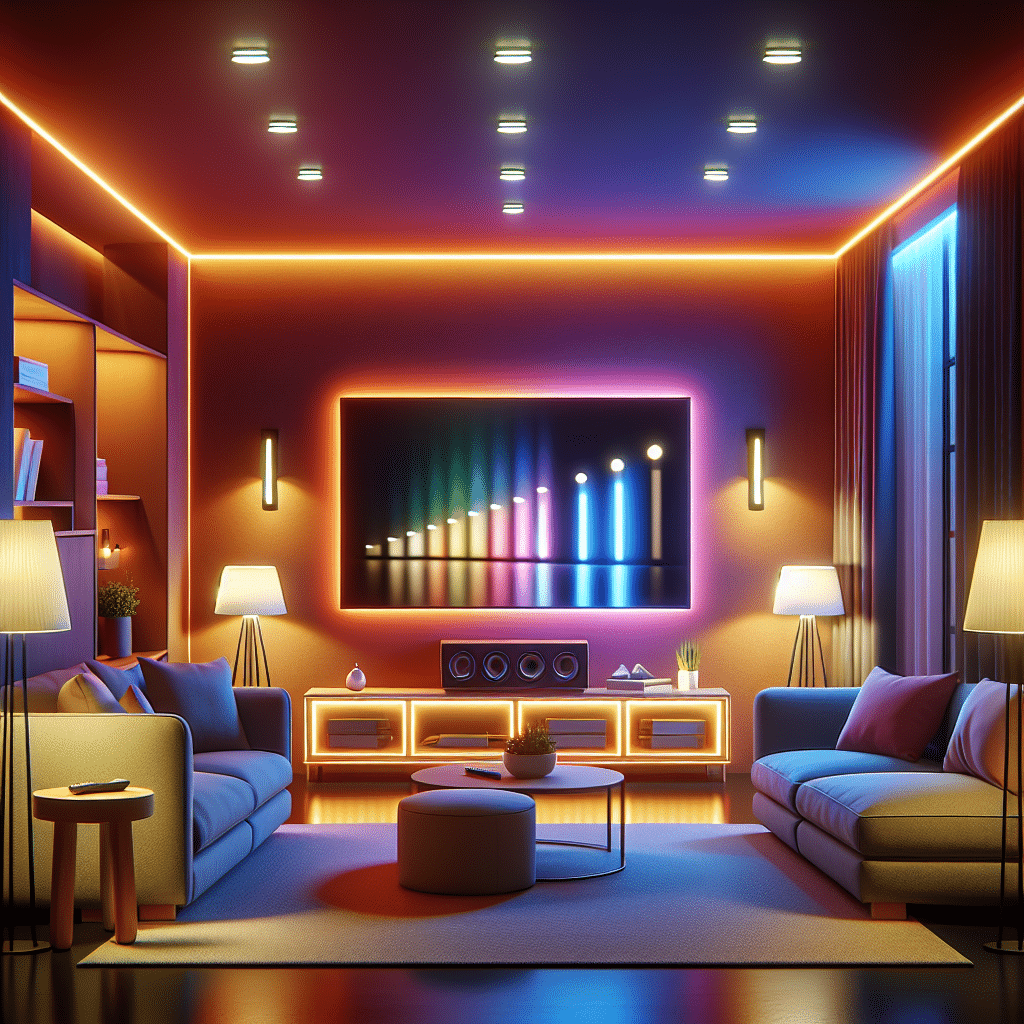Affordable Smart Lighting Solutions
Smart lighting solutions offer an innovative way to enhance your home while providing energy efficiency, convenience, and customization. Here, we explore a variety of affordable options that cater to different needs, styles, and budgets.
Understanding Smart Lighting
Smart lighting systems enable control over your home lighting via smartphones, tablets, or voice-activated assistants. They typically use LED technology due to its energy efficiency and longer lifespan compared to traditional incandescent bulbs. These systems allow users to adjust brightness, set schedules, and change colors, thereby creating the desired ambiance for any room.
Types of Smart Lighting
-
Smart Bulbs
Smart bulbs are the most accessible entry point into smart lighting. These bulbs can be easily screwed into existing light fixtures. Top options include:- Philips Hue White and Color Ambiance: Offers over 16 million colors, and integration with various platforms like Amazon Alexa and Google Assistant. Prices typically start around $15 per bulb.
- Wyze Bulbs: Budget-friendly and priced at about $8 each, these bulbs allow for simplicity without sacrificing features. They offer tunable white light and easy integration with home networks.
-
Smart Switches
If you want to upgrade your existing light fixtures without replacing bulbs, smart switches are an excellent alternative. They replace standard wall switches and can control multiple bulbs at once.- TP-Link Kasa Smart Switch: This switch starts at approximately $20 and works seamlessly with other Kasa devices. It can handle up to 150 watts of lighting and provides scheduling features.
- Lutron Caseta Wireless Smart Lighting: With a price of around $60 per switch, this option works exceptionally well with various smart home ecosystems and allows extensive room control.
-
Smart Plugs
For lamps or lighting devices that don’t already support smart technology, consider smart plugs. These devices allow you to control standard lamps through a smartphone app or voice assistant.- Amazon Smart Plug: Priced at about $25, this plug integrates effortlessly with Alexa, enabling voice control for any lamp plugged into it.
- TP-Link Kasa Smart Plug: This affordable alternative also costs around $15 and includes energy monitoring, making it useful for tracking usage patterns.
Wireless Control Protocols
Smart lighting systems predominantly use three types of wireless protocols: Zigbee, Z-Wave, and Wi-Fi.
- Zigbee: Popularized by brands like Philips Hue, Zigbee forms a mesh network for responsive and reliable communication with minimal interference.
- Z-Wave: Known for its low energy consumption, Z-Wave is suitable for larger homes requiring robust connections.
- Wi-Fi: While convenient, Wi-Fi-connected devices can use much bandwidth and may slow down your network. Always consider your home’s connectivity ability when choosing this option.
Energy Efficiency Benefits
Investing in smart lighting often leads to significant savings on energy bills. Smart bulbs use up to 80% less energy than traditional incandescent bulbs. Features like dimming and scheduling ensure lights are only on when needed; thus, reducing wasted energy.
Additionally, many smart bulbs come with features that allow you to monitor usage, helping identify patterns and further cut down on costs.
Security Enhancements Through Smart Lighting
One of the crucial advantages of smart lighting is the security enhancement it offers. You can set timers or remote access to control your lighting, making it appear as though someone is home even when you’re away.
Motion-sensing lights can also be linked to a smart lighting system, alerting you if there’s movement in designated areas, which can deter potential intruders.
DIY Smart Lighting Projects
For those feeling creative, there are various DIY projects that can enhance your home’s lighting affordably.
- Repurposing Old Fixtures: Add smart bulbs to your vintage or existing lamps for a simple upgrade, providing a blend of classic style and modern convenience.
- Using Adhesive LED Strip Lights: Light up under cabinets or shelves with smart LED strip lights, which can be cut to size and installed easily.
Integration with Other Smart Home Devices
Compatible smart lighting can communicate with other devices in your smart home ecosystem. For instance, you can program your smart bulbs to dim when your home theater system is turned on or light up softly when motion is detected by smart security cameras.
Creating scenes that activate multiple devices at once—such as lights, smart speakers, and thermostats—enhances user experience and efficiency.
Popular Affordable Smart Lighting Brands
-
Philips Hue: A pioneer in smart lighting, their range includes bulbs, light strips, and lamps. Entry-level options usually start around $15, making it easy to get started.
-
Wyze: Known for their budget-friendly prices, Wyze lights can be an economical choice for those new to smart technology, offering great features at competitive prices.
-
TP-Link Kasa: Their smart bulbs and plugs are well-reviewed for easy setup and reliability, with bulbs typically priced between $10 to $15.
-
Sengled: A reliable option for budget-conscious consumers, Sengled smart bulbs start under $10 and can connect to existing Wi-Fi networks.
Tips for Choosing Smart Lighting
-
Compatibility: Ensure the lighting solution is compatible with your smartphone system and other smart devices.
-
Brightness and Color Range: Depending on individual preference, check the maximum lumens and color-changing features.
-
Ease of Setup: Look for products that offer user-friendly installation and app control.
-
Warranty and Support: Choose brands that provide good customer service and warranty, ensuring help is available if needed.
Conclusion
Affording smart lighting does not mean compromising on features or quality. With various options catering to every budget, homeowners can step into the future of home automation without breaking the bank.
